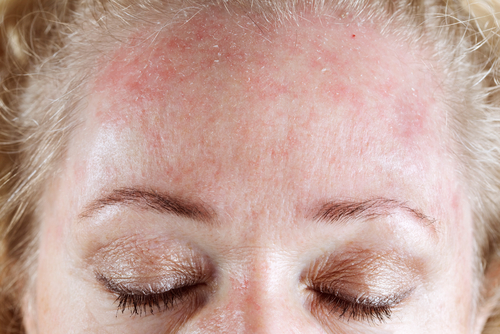
p-Phenylenediamine, or PPD, is one of the ingredients contained in hair dye products, and it’s also a frequent cause of allergies. The usage of hair dye products is nowadays very frequent, particularly amongst women. In the US, as in the UK, its use has increased for the past decades both for males and females, mostly as an attempt to regain a more juvenile look.
What Is PPD?
Paraphenylenediamine is an organic compound derived from aniline. This chemical substance is a white solid the public gets in contact with mostly through the use of hair or fur dye products, although tattoos, photocopy and printing inks, oils and gasoline or lithography plates all may contain it too.
PPD appears in most hair dye products because it gives hair a natural looking color. The dye is permanent, too, making it even more attractive to customers. Hairwashing will not deteriorate the color either, not even using the strongest products.
Hair dying is performed mostly by the combination of two products: the first, of course, is PPD, contained in a bottle, and in another bottle, an accordant quantity of developer or oxidizer. This is because, ironically, PPD is actually a colorless compound, and it actually requires oxidization to gain color. If PPD is fully oxidized, it will never cause any allergic reactions. These can only take place if PPD is only partially oxidized.
What Are the PPD Allergy Symptoms?
Most people with PPD allergy complain about the same unpleasant sensations. Here are some common PPD allergy symptoms you will notice if you ever suffer from it:
1. Dermatitis
The most common and obvious symptom of all, dermatitis mostly presents itself as a very insistent itching. This is because dermatitis is effectively skin irritation or the inflammation of the epidermis. If you have dermatitis you should be experiencing a constant itching sensation over the affected area, but you might also find swollen patches or red skin areas. First, symptoms do not normally appear until 10 days after first usage. After that, reactions take 6 to 72 hours.
2. Urticaria
This skin sickness is particularly unpleasant as it is characterized by cutaneous lesions of delimitated contours, generally evanescent and slowly moving. Urticaria mostly looks like vaguely contoured red patches of skin, looking more like a jellyfish sting than Dermatitis. These symptoms are also accompanied by severe itching, and sometimes difficulty swallowing and vomits. All these PPD allergy symptoms appear within an hour after exposure to PPD.
3. Anaphylactic Shock
An anaphylactic shock is the most serious outcome of a PPD reaction. It’s rare, yet it can lead to death after the experiencing of a shortness of breath and a drop in blood pressure. Immediate medical attention is required for anyone suffering from these PPD allergy symptoms.
4. Facial Swelling
In some cases, PPD can also cause severe facial swelling, generally along with dermatitis or before an anaphylactic shock. It should not be mistaken with an angioedema.
How to Deal with PPD Allergy Symptoms
PPD allergy symptoms could cause much discomfort, but with the help of the following good recommendations, you may cope with PPD symptoms more easily.
1. Quick Treatment
To keep the reaction as minimal as possible, we would advise you to remove dye from your hair as soon as you start feeling any PPD allergy symptoms mentioned above. You can do so by washing your hair with mild soap, for instance, or even soap-free shampoo, and then apply a 2 percent hydrogen peroxide solution. There is no problem to use moist dressings in case you believe it will ease you. If symptoms persist after effectively removing all dye from your hair, you should probably consider seeking medical attention.
2. Take Precautions
To avoid PPD allergy symptoms, the most intuitive precaution might be patch testing the dye product on your skin before usage. You should not fully rely on this, however, nor on previous safe usages. Allergic reactions can bloom from one day to another.Using gloves to apply the dye is a precaution to consider as well so that you can avoid the dye getting in direct contact with your skin.
3. Choose a Safe Alternative
A good hair dye product that does not contain PPD is yet to be created. However, studies have proven there are alternatives out there worth considering. Para-toluenediamine sulfate (PTDS), for example, is a relatively effective substance used in some hair dyes and probably your best option. Over half of PPD allergic patients who has used it did not report any malaise.